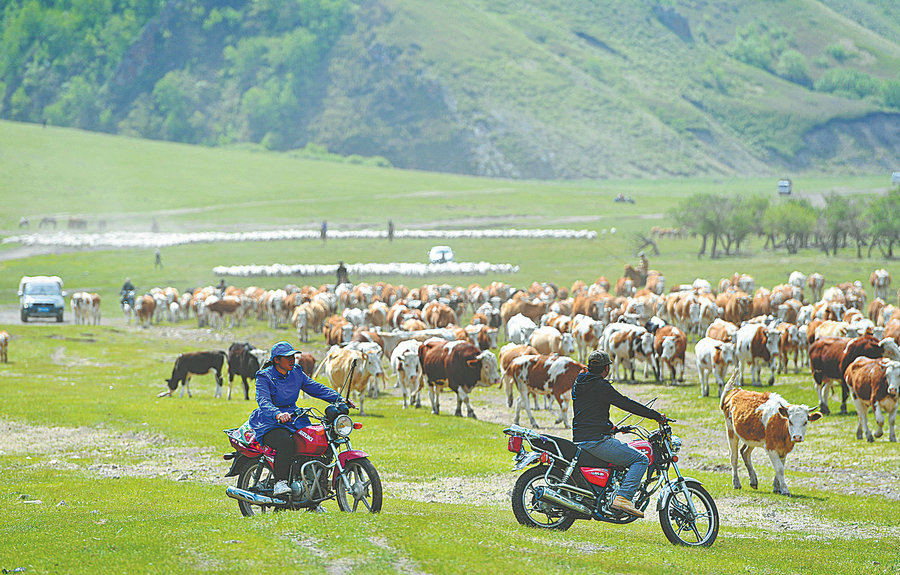

A balance with nature
The Ar Horqin Grassland Nomadic System has a healthy ecosystem and a good landscape, according to Liu Moucheng, an associate researcher with the Institute of Geographic Sciences and Natural Resources Research, Chinese Academy of Sciences, who is a co-drafter of bidding documents seeking GIAHS status.
"The heritage site has a variety of ecosystems, such as forests, grasslands, wetlands, rivers, and so on, each with important ecological functions," he points out.
"The forests and shrubs on the hillside can conserve water, and, in conjunction with the surface runoff formed by precipitation, have the functions of nourishing grasslands, promoting nutrient cycling and ensuring the domestic water of herdsmen," Liu further explains. "Grassland vegetation can also prevent wind erosion and fix sand encroachment, conserve water and soil, and provide life-sustaining habitats."
The seasonal movement of herds among different pastures plays an important role in maintaining the self-renewal and recovery capacity of the grasslands, and the nomadic lifestyle can protect vegetation and make rational use of water resources, while keeping soil fertility from degrading, Liu adds.
Chuluunbagana, the head of Bayan-Undur sum, says: "Within the summer pastures, we rotate different grazing spots. We start from somewhere higher up on the hill, or farther away from our camps. Grass there is flourishing at first. Then, we gradually approach toward our camps.
"We can thus leave enough time for the grass to take a rest and grow," he says.
However, the growing population of not only people, but also livestock, still puts unprecedented pressure on the grassland resources. Locals have, therefore, devised ways to avoid overgrazing. As ancestral wisdom is rooted in an era of relatively small societies, it may be unable to solve issues today. This is where modern planning can help.
For example, after scientific evaluation, since 2015, the number of sheep and goats in the nomadic system has been reduced from 390,000 to 190,000, following the guidance of the local government of Ar Horqin Banner, while cattle has been increased from 40,000 to 81,000 head. No more than 100,000 sheep are allowed to migrate to the summer camps every year.
More herding families have switched to using motorcycles during migration and grazing and, consequently, the grasslands are coming under new, different pressures than before.
"We've always taken measures to restore the ecology along the seasonal movement routes," Chuluunbagana says. "And more herdsmen are also being ushered into previously lesser-grazed pastures, farther away from road and water sources. This way, they can maintain a more balanced relationship with the grass."
He is glad to see that horse riding is still crucial in grazing, particularly in rugged areas. In many people's eyes, horses, which have been a key part of Mongolian history and culture, are irreplaceable in the nomadic system.
"We love motorcycles," Tsetseg, a local herdsman, says. "But if grass is continuously rolled over by wheels, it will stop growing. So motorcycles can only be our assistants. Horses will always be our closest friends."